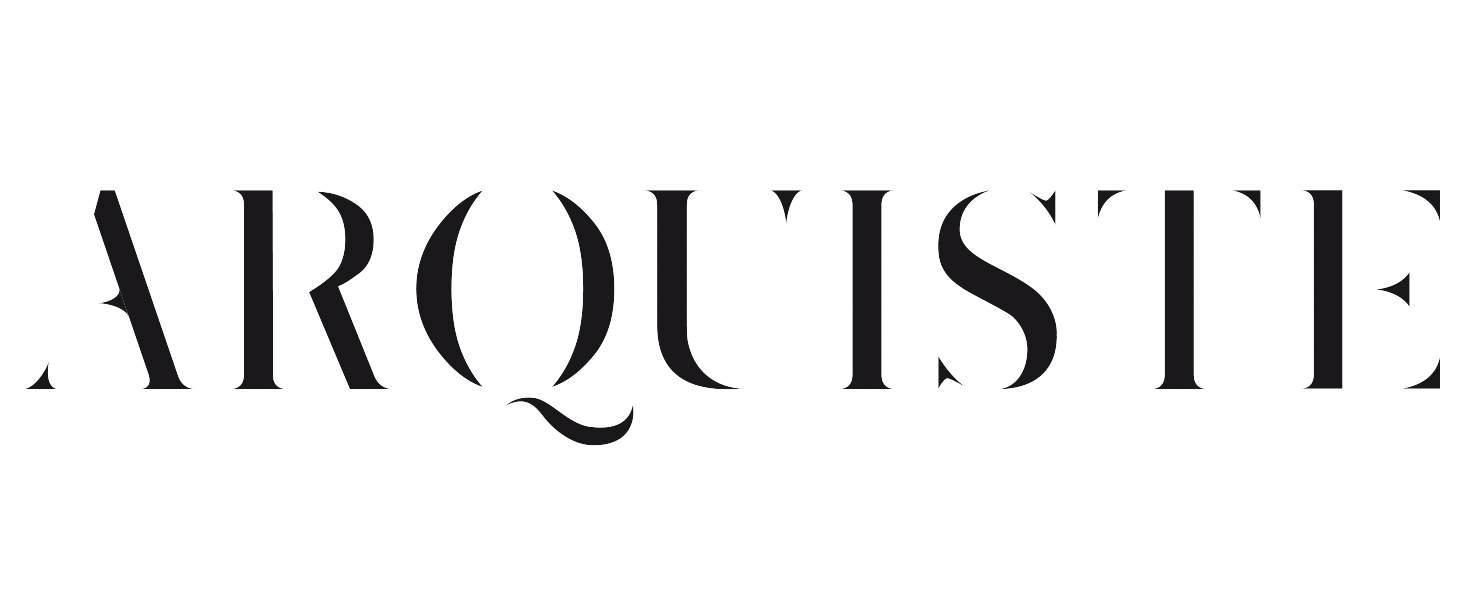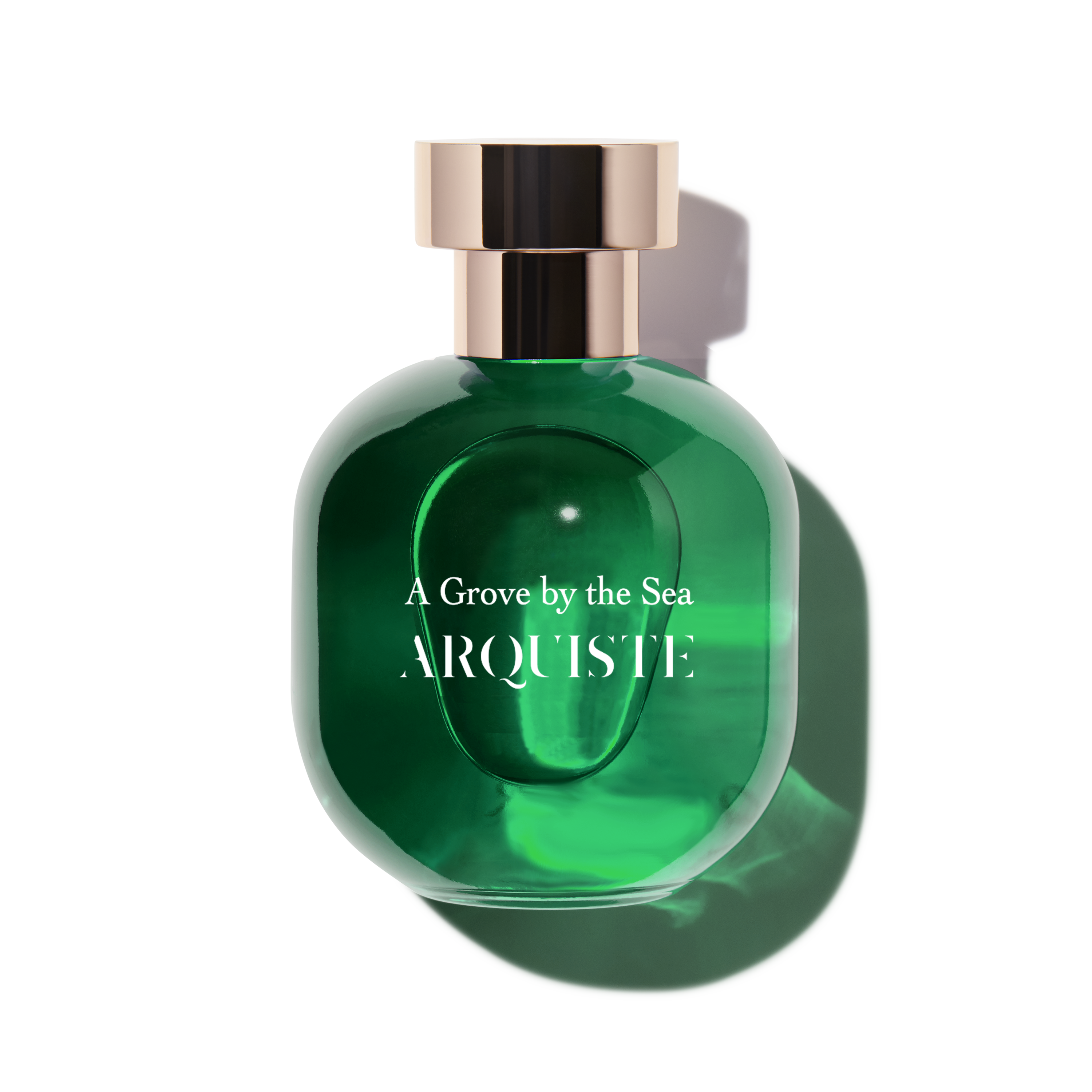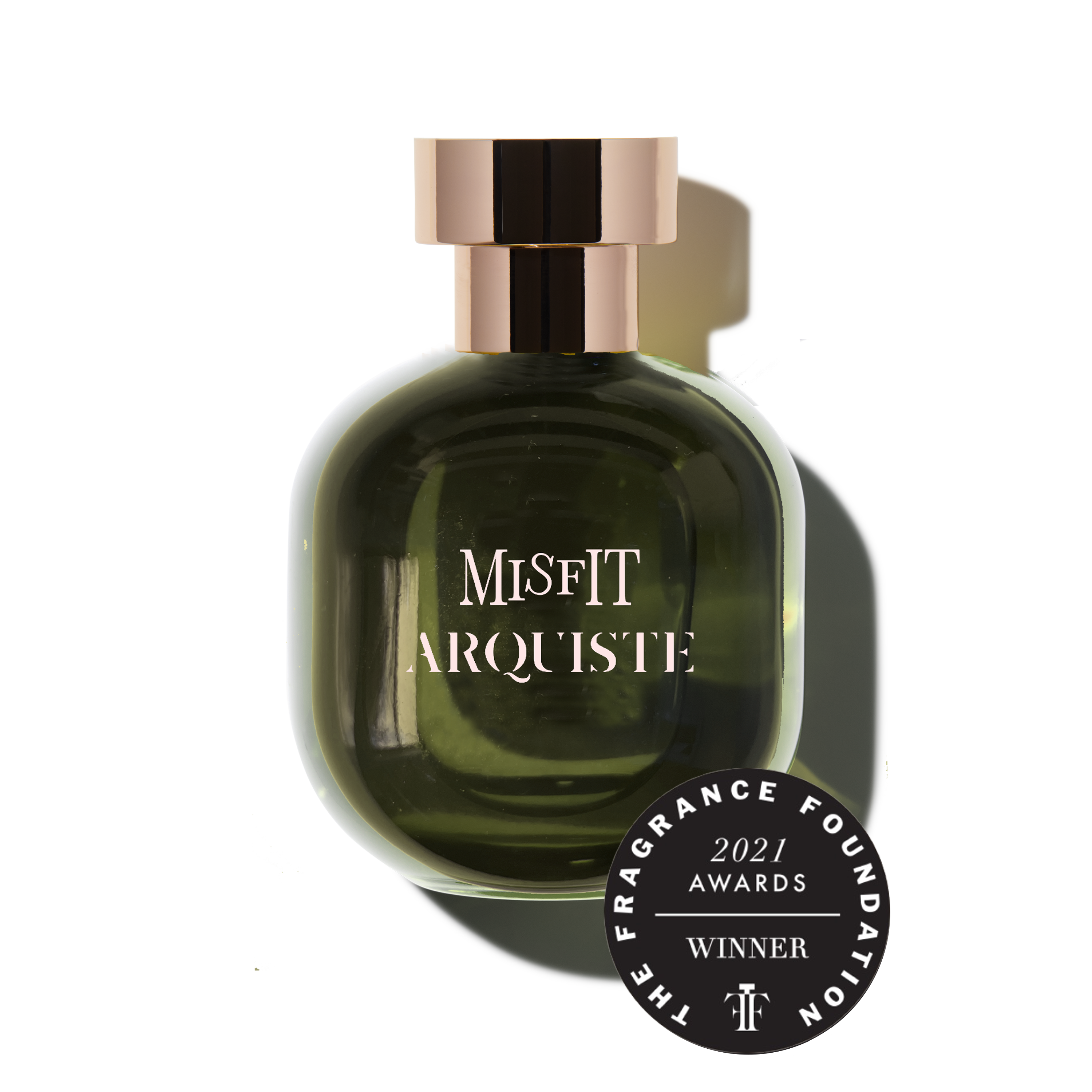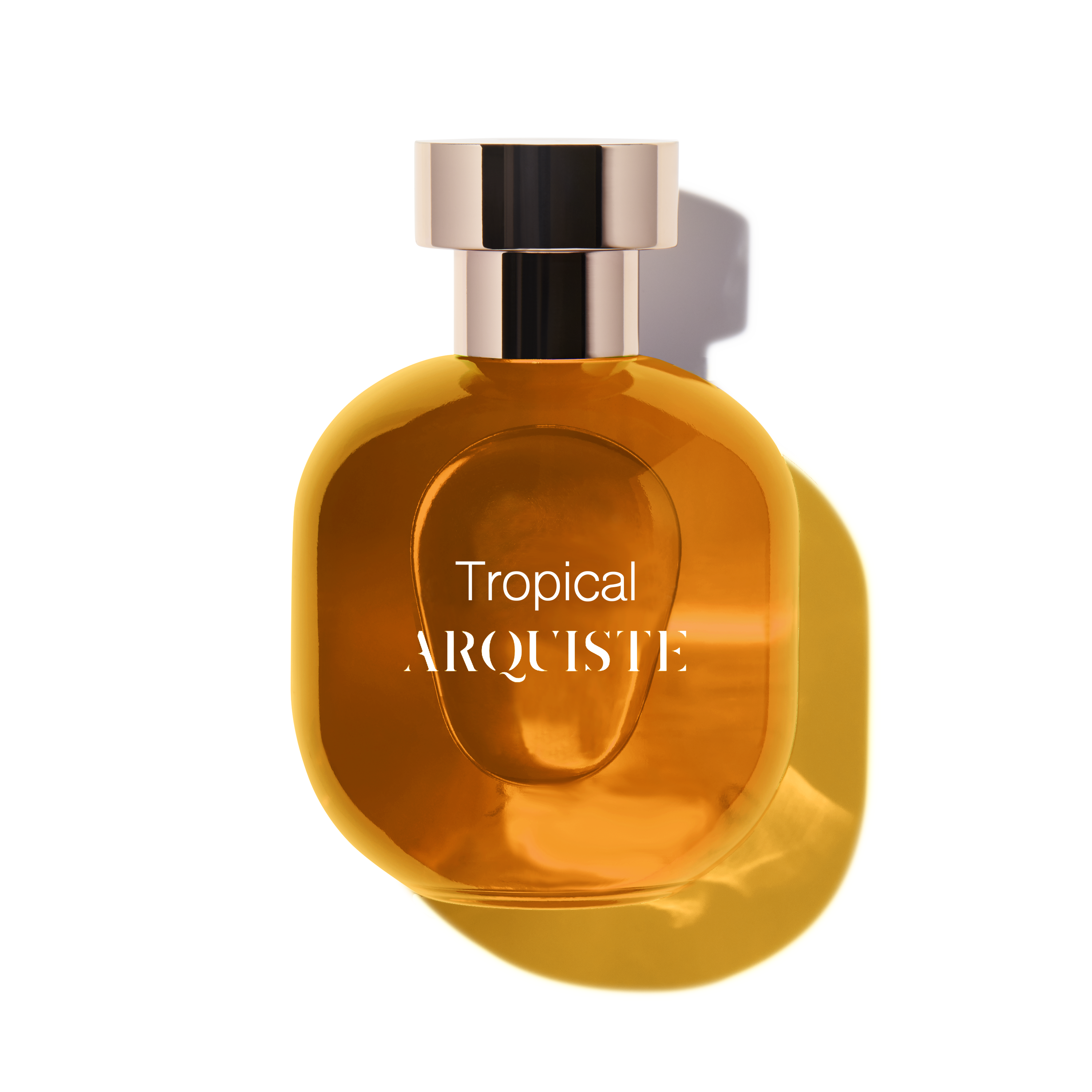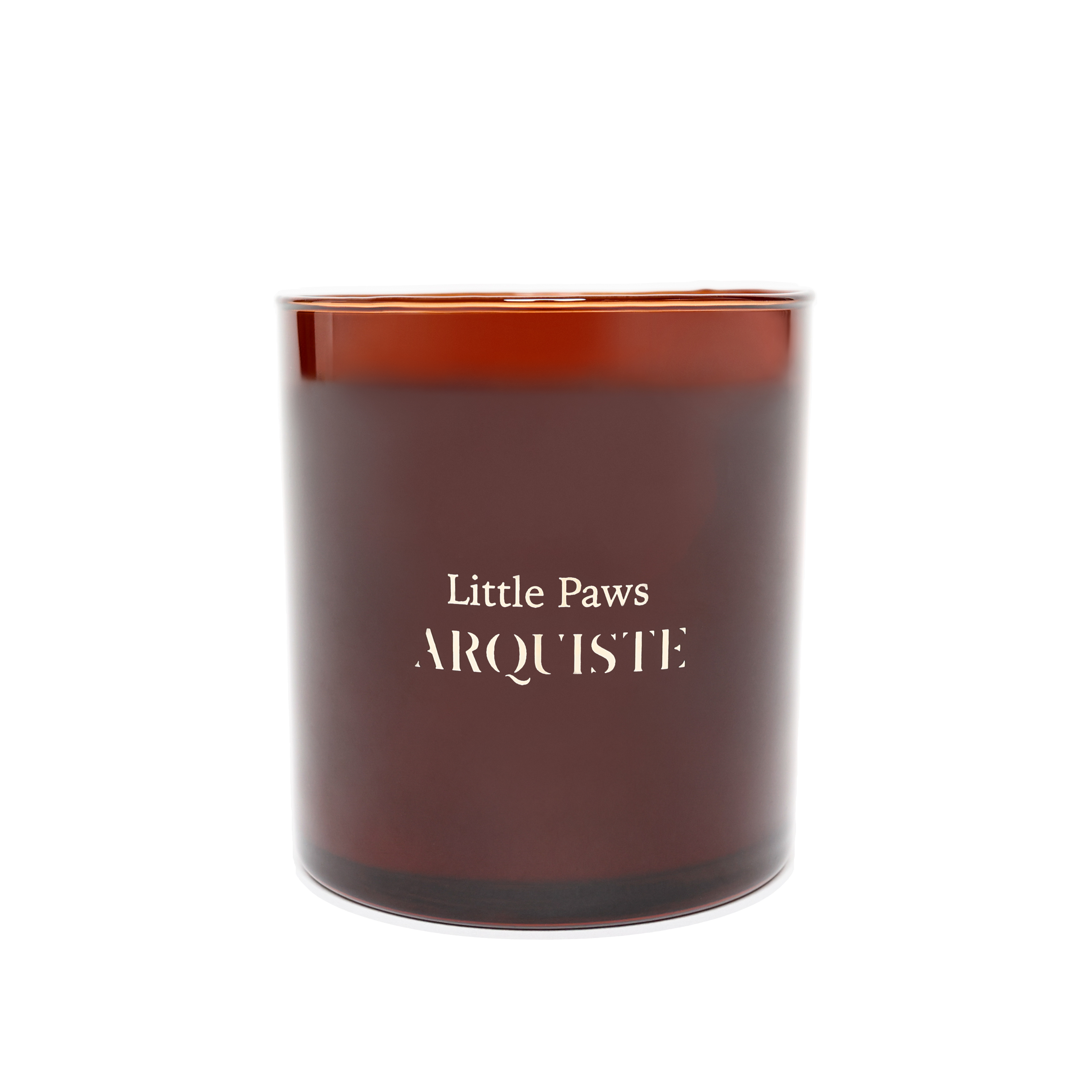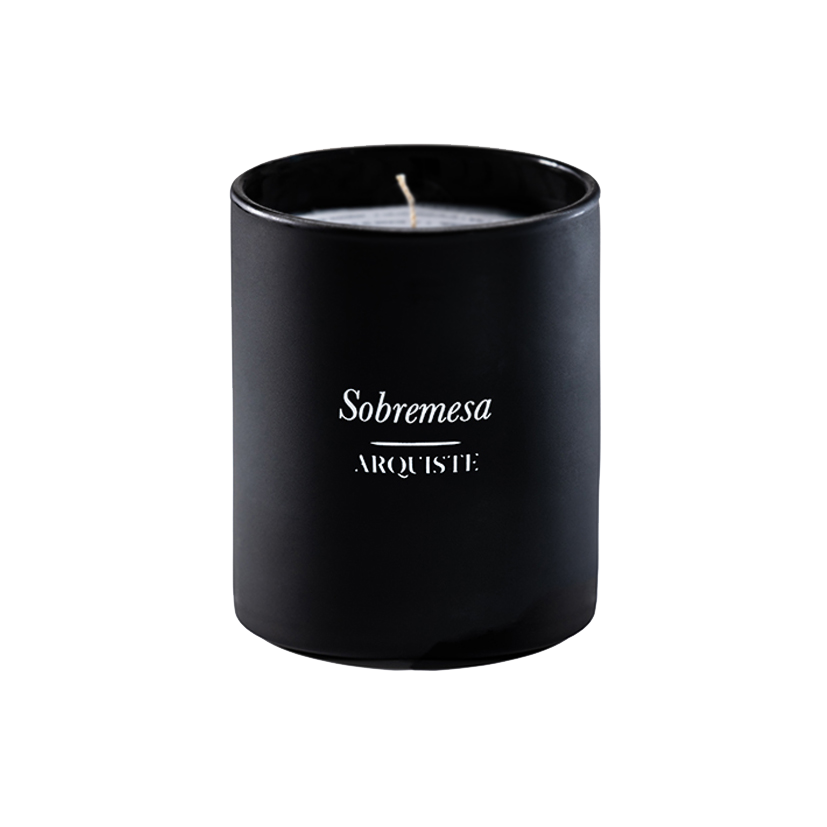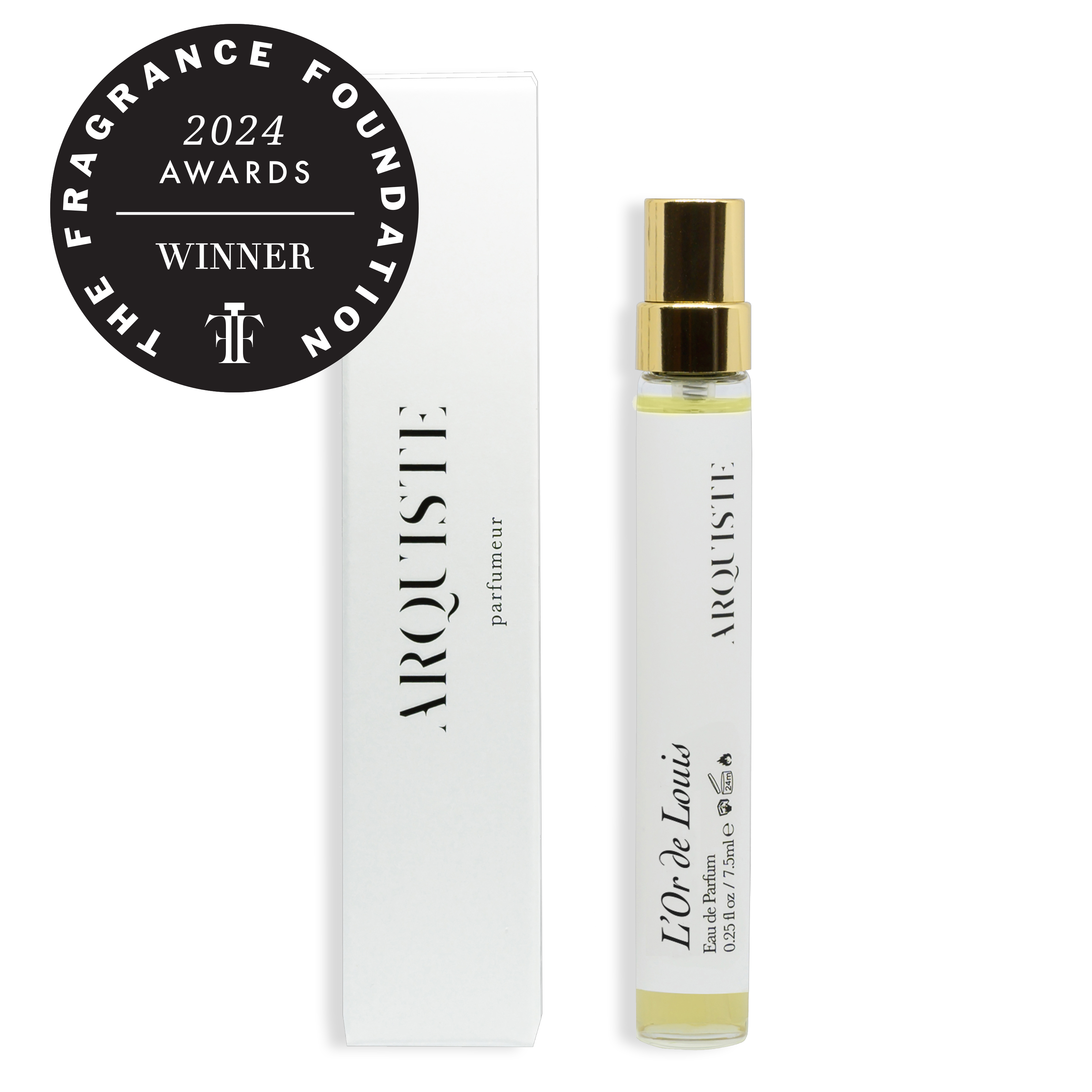
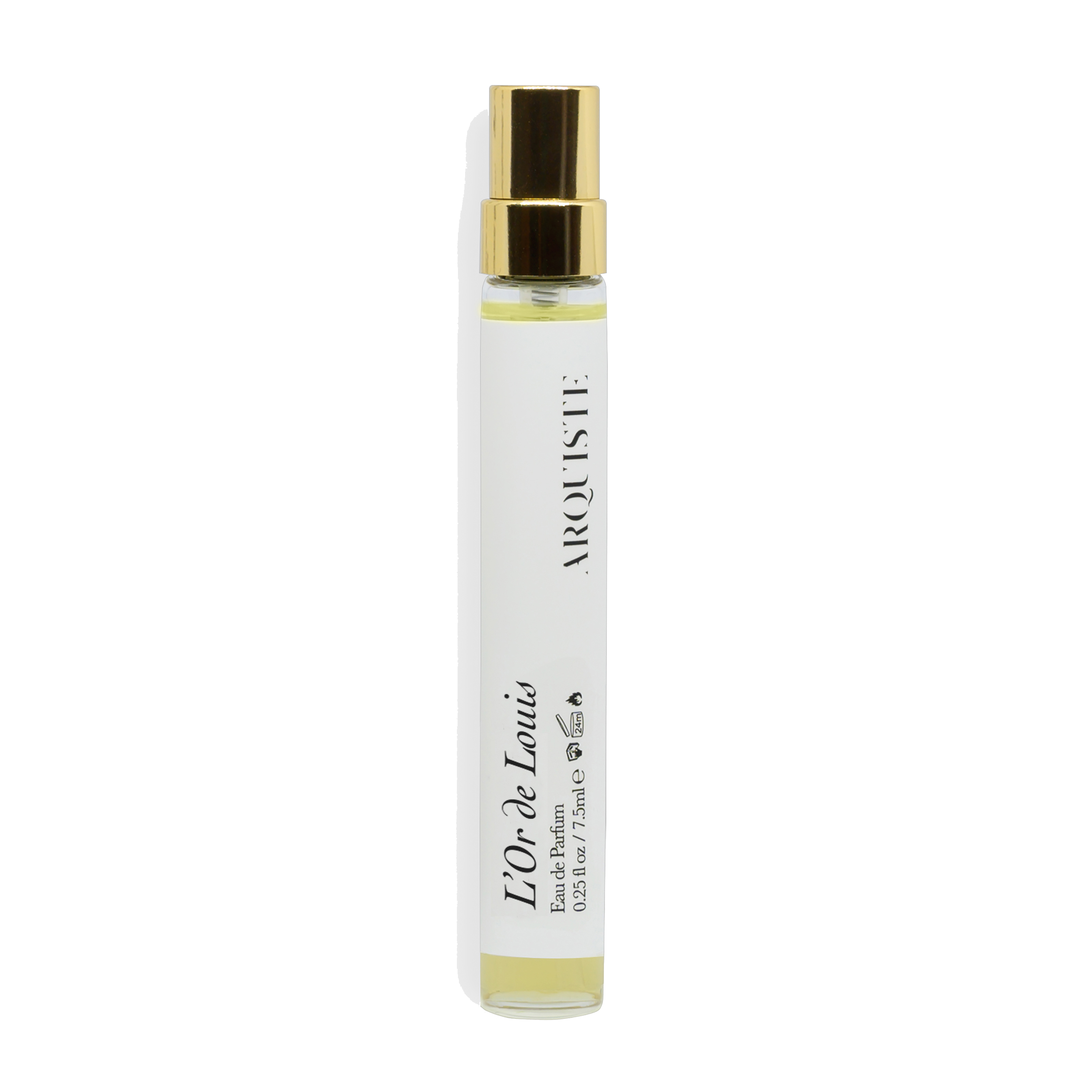
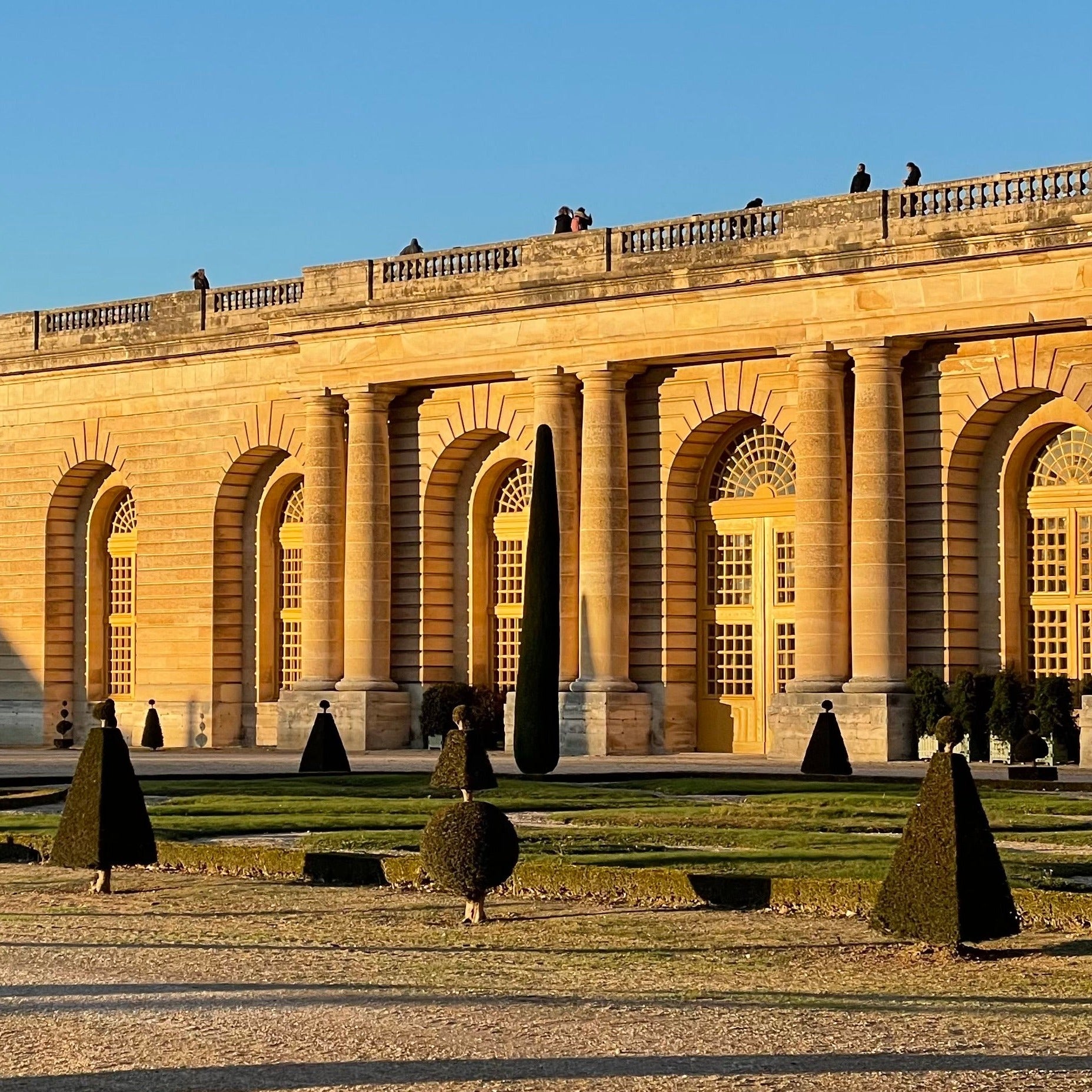
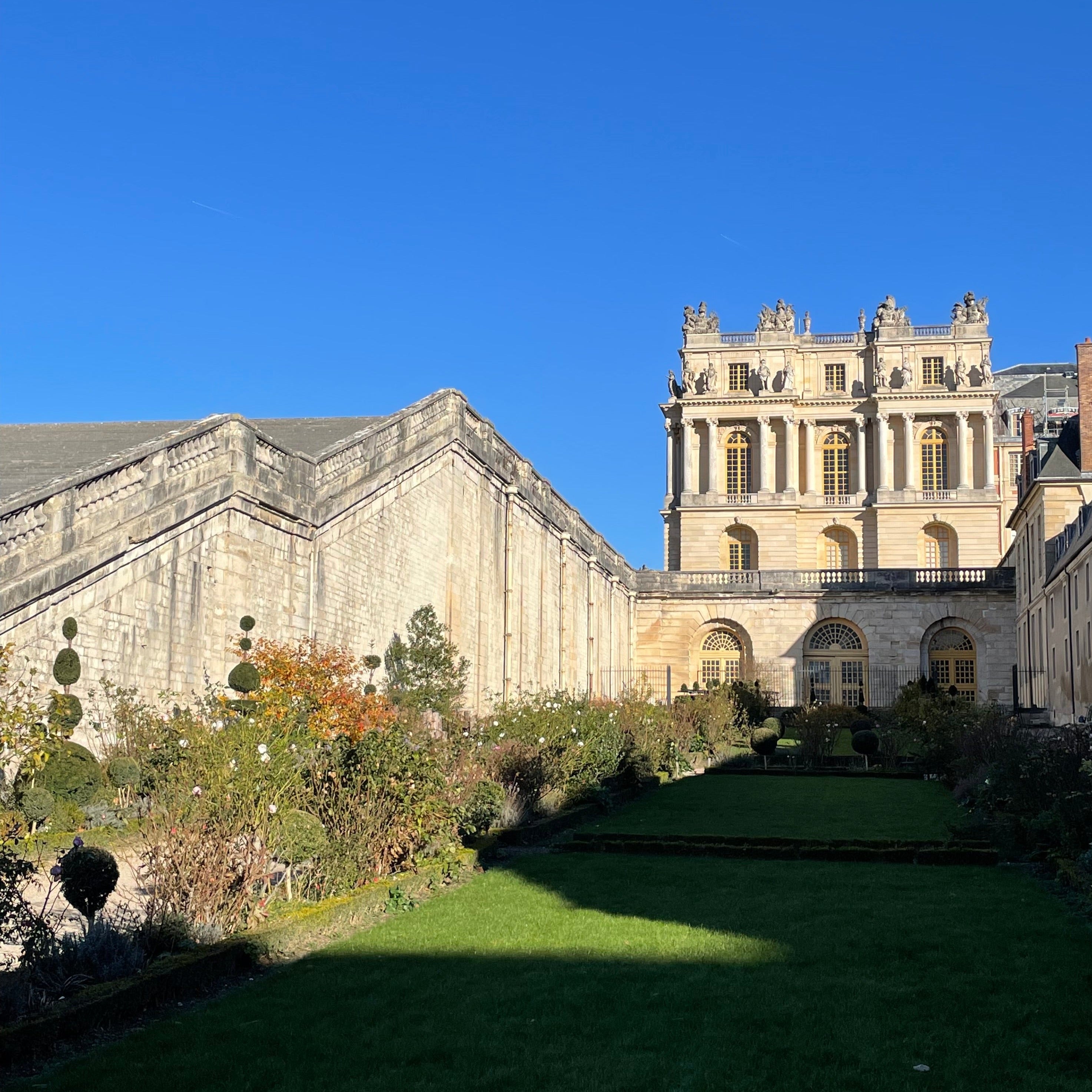
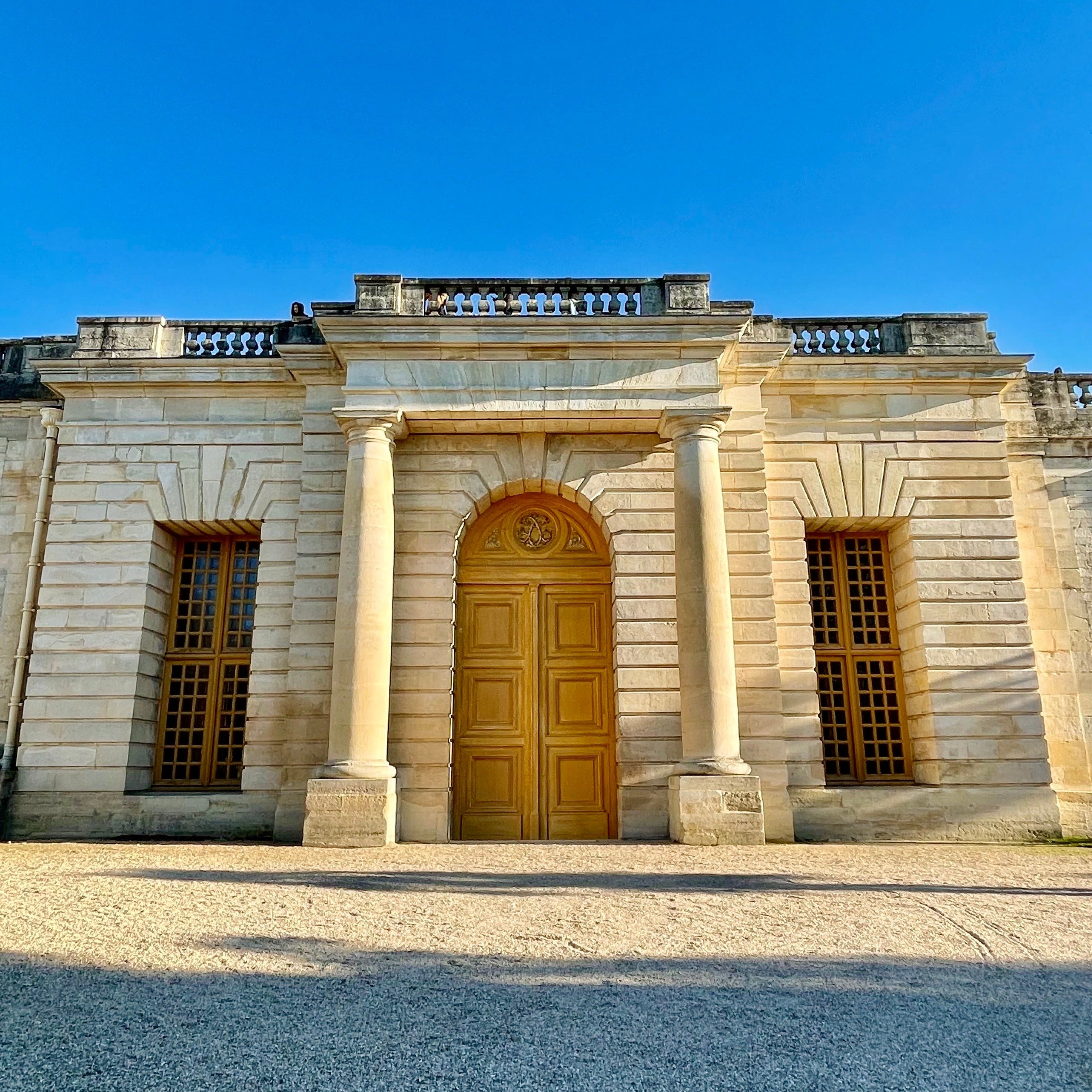
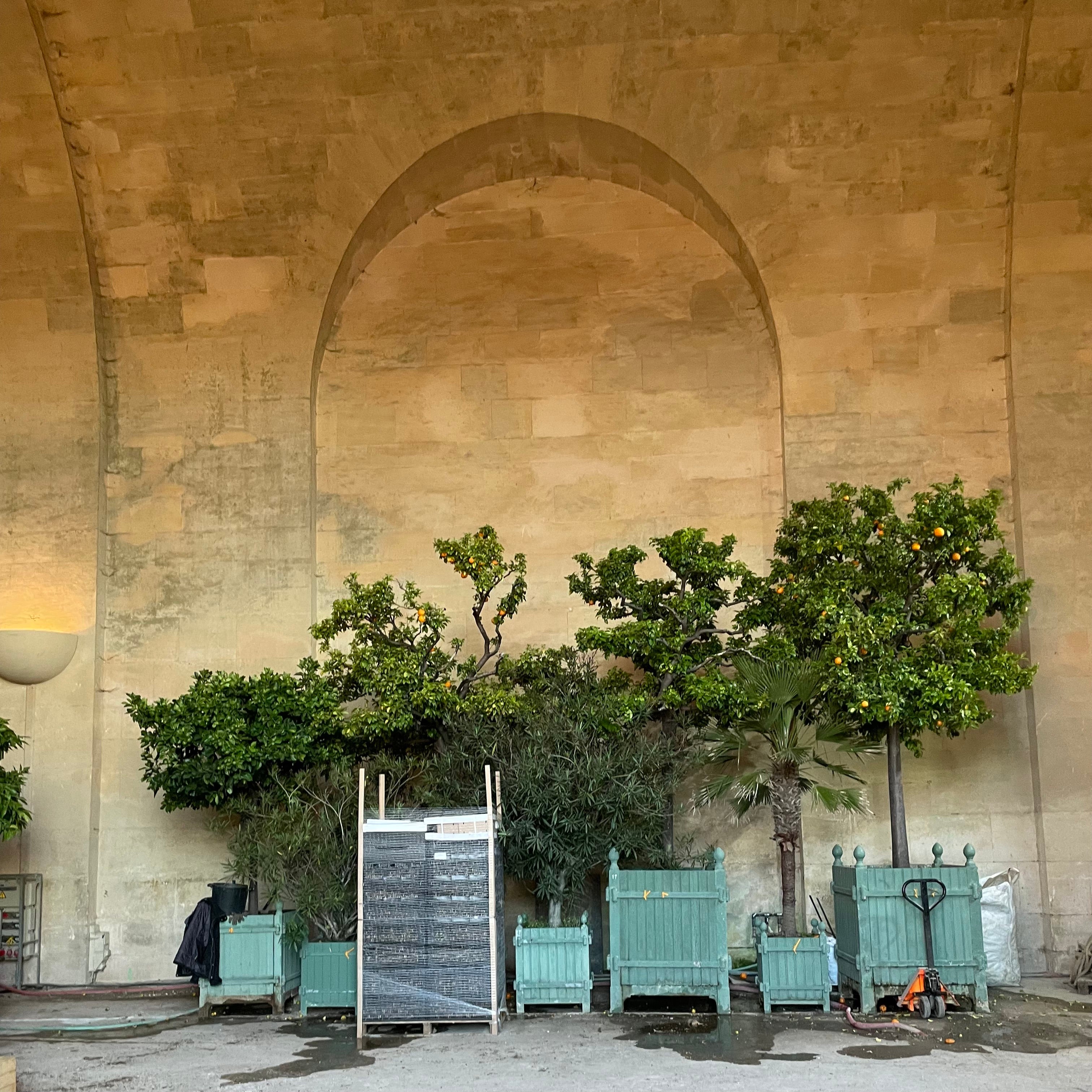
Top Notes
Orange blossom absolute
Pomegranate
Bergamot
Jasmine absolute
Heart Notes
Honey
Florentine orris
Musk
Cedar wood
Base Notes
Firewood smoke
Cade wood
Oislet de Chypre (a resinous accord dating from the 17th century)
Intro
An opulent formula developed over 12 years of work with perfumer Rodrigo Flores-Roux. L'OR DE LOUIS evokes the moments when Louis XIV and his Court would visit the Grand Orangery to delight in the flowering orange trees warmed by bonfires. A bright orange blossom with a warm, woody background, including notes of orange blossom absolute, pomegranate, honey and firewood smoke.
7.5 ml / 0.25 fl oz. Portable size.
*Try our travel sprays, then receive a code to enjoy a $40 credit towards your first 100ml bottle.
*Travel sprays not returnable.
History
April 1687, The Orangery, Versailles.
More than a thousand Mediterranean trees are housed in the cathedral-like galleries of the Orangery. Built by the King’s architect to impress courtiers, the tree-lined space became a theatrical setting to entertain the Court. Inside, the gardeners would build bonfires to keep the trees warm so when the Sun King visited, the heady scent of firewood blended with his beloved orange blossoms would emit a generous golden aura.
Developed with Rodrigo Flores Roux.
Description
The olfactive snapshot of Louis XIV's Grand Orangery, where the golden scent of orange blossom mixes with the firewood smoke of the bonfires lit by gardeners.
7.5 ml / 0.25 fl oz. travel spray. Portable, convenient and practical.
More
- Louis XIV was dubbed the ‘sweetest smelling monarch’ during his reign. To satisfy his particular love of orange blossom he imported thousands of orange trees from Spain, Italy, and Portugal and had his architect Jules Hardouin-Mansart expand the largest ever Orangery in Europe. During his reign, it was fashionable among nobles to offer their own citrus and fruit trees to complement the King’s collection.
- A true genius of architecture, the name of Jules Hardouin-Mansart is attached to the most grandiose architectural achievements of Louis XIV’s reign. At Versailles, he designed among others the Hall of Mirrors, the North and South wings, the Cent-Marches staircases, the Royal Chapel, the Grand Trianon and of course, the Grand Orangery.
- The Orangery, by its monumentality and the purity of its lines, is one of the places where Hardouin-Mansart best asserted his talent. Facing south, it’s protected from the cold of the prevailing winds by its position under the Parterre du Midi. Orange, lemon and other and citrus trees, as well as oleanders, palm and even pomegranate trees have been protected for over 200 years within its monumental galleries.
- Hardouin-Mansart doubled the length and width of the first orangery built by Louis Le Vau in 1663, to make it the immense building preserved today. The central gallery is over 150 meters long and its vault culminates at 13 meters high. It was built under the ‘Italian model”, that is, in stone, with walls 4 to 5 meters thick, double glazing of the bays and a Southern exposure to maintain warmer temperatures even in winter.
- To preserve the heat and trick the trees into blossoming earlier, the gardeners lit bonfires, mixing the warm scent of burning woods with the orange, lemon, and honey-like fragrance. To enhance the ambience even further, small bird-shaped ornaments known as Oiselets de Chypre, would be produced out of a fragrant paste and hung from tree branches.
- Another famous scented preparation that would have enhanced the ambiance was the Pommade de Florence, a popular concoction made of Florentine iris, fashionable with the French ladies and greatly appreciated by the King.
-Louis’ own signature scent, ‘Acqua Angeli’ (L’Eau d’Ange), consisted of a mixture of nutmeg, clove, and other resins boiled in rose water. Jasmine, orange blossom and a few grains of musk were added for his shirts to be rinsed in the sweetly scented water.
Bio
- Mitford, Nancy, “The Sun King: Louis XIV at Versailles”, The New York Review of Books, New York, 1967
- Lablaude, Pierre-André, “La Restauration des Croisées Monumentales de l’Orangerie”, Monumental 2005, Revue Scientifique et Technique des Monuments Historiques, Centre des Monuments Nationaux, Monum, Editions du Patrimoine, Paris, 2005.
- Laszlo, Pierre, “Citrus: A History”, University of Chicago Press, Chicago, 2008.
- Saudan, Sylvia and Michel, “Orangeries: Palaces of Glass : Their History and Development”, Evergreen, 1994.
– Breton, Guy, “Histoires d’Amour de l’Historie de France”, Tome Quatre, Editions Noir et Blanc, 8 Rue Lincoln, Paris, 1964.
– Genders, Roy, “Perfume through the Ages”, G.P. Putnam’s Sons, New York, 1972.
– Groom, Nigel, “The New Perfume Handbook”, Chapman & Hall, London, 1997.
– Hyde, Elizabeth, “Cultivated Power: Flowers, Culture, and Politics in the Reign of Louis XIV”, University of Pennsylvania Press, Philadelphia, 2005.
- Baumel, Jean, “Publicité d’un maître apothicaire -parfumeur au XVIIème siècle”. Montpellier en 1668, Editions C.G.C. et la Grande Revue, 37 Rue de Constantinople, Paris, 1974.
Image

L'OR DE LOUIS
Payment Methods





Shipping
ARQUISTE ships exclusively within the continental United States.
Please allow 1-3 days for us to receive and process your order during busy seasons. East Coast customers: 3-4 business days after processing.
Central and West coast customers: 5-7 business days after order processing.








L'OR DE LOUIS
Top Notes
Orange blossom absolute
Pomegranate
Bergamot
Jasmine absolute
Heart Notes
Honey
Florentine orris
Musk
Cedar wood
Base Notes
Firewood smoke
Cade wood
Oislet de Chypre (a resinous accord dating from the 17th century)
Intro
An opulent formula developed over 12 years of work with perfumer Rodrigo Flores-Roux. L'OR DE LOUIS evokes the moments when Louis XIV and his Court would visit the Grand Orangery to delight in the flowering orange trees warmed by bonfires. A bright orange blossom with a warm, woody background, including notes of orange blossom absolute, pomegranate, honey and firewood smoke.
7.5 ml / 0.25 fl oz. Portable size.
*Try our travel sprays, then receive a code to enjoy a $40 credit towards your first 100ml bottle.
*Travel sprays not returnable.
History
April 1687, The Orangery, Versailles.
More than a thousand Mediterranean trees are housed in the cathedral-like galleries of the Orangery. Built by the King’s architect to impress courtiers, the tree-lined space became a theatrical setting to entertain the Court. Inside, the gardeners would build bonfires to keep the trees warm so when the Sun King visited, the heady scent of firewood blended with his beloved orange blossoms would emit a generous golden aura.
Developed with Rodrigo Flores Roux.
Description
The olfactive snapshot of Louis XIV's Grand Orangery, where the golden scent of orange blossom mixes with the firewood smoke of the bonfires lit by gardeners.
7.5 ml / 0.25 fl oz. travel spray. Portable, convenient and practical.
More
- Louis XIV was dubbed the ‘sweetest smelling monarch’ during his reign. To satisfy his particular love of orange blossom he imported thousands of orange trees from Spain, Italy, and Portugal and had his architect Jules Hardouin-Mansart expand the largest ever Orangery in Europe. During his reign, it was fashionable among nobles to offer their own citrus and fruit trees to complement the King’s collection.
- A true genius of architecture, the name of Jules Hardouin-Mansart is attached to the most grandiose architectural achievements of Louis XIV’s reign. At Versailles, he designed among others the Hall of Mirrors, the North and South wings, the Cent-Marches staircases, the Royal Chapel, the Grand Trianon and of course, the Grand Orangery.
- The Orangery, by its monumentality and the purity of its lines, is one of the places where Hardouin-Mansart best asserted his talent. Facing south, it’s protected from the cold of the prevailing winds by its position under the Parterre du Midi. Orange, lemon and other and citrus trees, as well as oleanders, palm and even pomegranate trees have been protected for over 200 years within its monumental galleries.
- Hardouin-Mansart doubled the length and width of the first orangery built by Louis Le Vau in 1663, to make it the immense building preserved today. The central gallery is over 150 meters long and its vault culminates at 13 meters high. It was built under the ‘Italian model”, that is, in stone, with walls 4 to 5 meters thick, double glazing of the bays and a Southern exposure to maintain warmer temperatures even in winter.
- To preserve the heat and trick the trees into blossoming earlier, the gardeners lit bonfires, mixing the warm scent of burning woods with the orange, lemon, and honey-like fragrance. To enhance the ambience even further, small bird-shaped ornaments known as Oiselets de Chypre, would be produced out of a fragrant paste and hung from tree branches.
- Another famous scented preparation that would have enhanced the ambiance was the Pommade de Florence, a popular concoction made of Florentine iris, fashionable with the French ladies and greatly appreciated by the King.
-Louis’ own signature scent, ‘Acqua Angeli’ (L’Eau d’Ange), consisted of a mixture of nutmeg, clove, and other resins boiled in rose water. Jasmine, orange blossom and a few grains of musk were added for his shirts to be rinsed in the sweetly scented water.
Bio
- Mitford, Nancy, “The Sun King: Louis XIV at Versailles”, The New York Review of Books, New York, 1967
- Lablaude, Pierre-André, “La Restauration des Croisées Monumentales de l’Orangerie”, Monumental 2005, Revue Scientifique et Technique des Monuments Historiques, Centre des Monuments Nationaux, Monum, Editions du Patrimoine, Paris, 2005.
- Laszlo, Pierre, “Citrus: A History”, University of Chicago Press, Chicago, 2008.
- Saudan, Sylvia and Michel, “Orangeries: Palaces of Glass : Their History and Development”, Evergreen, 1994.
– Breton, Guy, “Histoires d’Amour de l’Historie de France”, Tome Quatre, Editions Noir et Blanc, 8 Rue Lincoln, Paris, 1964.
– Genders, Roy, “Perfume through the Ages”, G.P. Putnam’s Sons, New York, 1972.
– Groom, Nigel, “The New Perfume Handbook”, Chapman & Hall, London, 1997.
– Hyde, Elizabeth, “Cultivated Power: Flowers, Culture, and Politics in the Reign of Louis XIV”, University of Pennsylvania Press, Philadelphia, 2005.
- Baumel, Jean, “Publicité d’un maître apothicaire -parfumeur au XVIIème siècle”. Montpellier en 1668, Editions C.G.C. et la Grande Revue, 37 Rue de Constantinople, Paris, 1974.
Image

